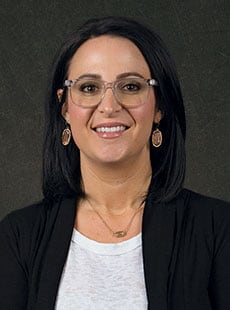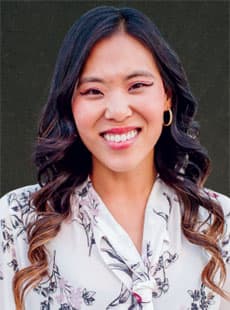 Course Introduction
Course Introduction
Core Standards of the Course
Strand 1
Students will have knowledge of the history of photography.
Standard 1
History of Photography.
Standard 2
Evolution and future of Digital Photography.
Strand 2
Students will be able to understand and apply the multi-step process of “workflow”.
Standard 1
Identify the multi-step process of workflow in Image capture.
-
Pre-shoot checklist (Hardware - memory card, battery, lens etc.)
-
Holding the camera (steady, shoot, and format)
-
Exposure (auto or manual - aperture and shutter priority)
-
Light metering
-
Focus (auto or manual)
-
Flash (on or off)
-
Composition
-
Image Capture
-
Verify correct exposure or adjust and reshoot (histogram, overexpose, underexposed)
Standard 2
Identify the multi-step process of workflow as it relates to Image editing.
-
Image import (transfer files to a computer)
-
Image management (organizing files, photo selection, Naming conventions, and managing folders)
-
Cull images (rating, flagging, Contact Sheet * * Not Tested)
-
Basic image editing (straighten, rotate, limited crop, adjust tonal range, contrast, and color correction)
Standard 3
Identify the multi-step process of workflow as it relates to image output.
-
Size/resolution for intended purpose (web, presentation or print)
-
Image delivery (Internet, removable media, print)
-
File archive (Cloud storage, local storage)
Strand 3
Students will be able to identify different types of digital cameras, benefits of sensor size and resolution, the location of their basic components, and the benefits of each type.
Standard 2
Sensor Size and benefit
-
Basic Camera Sensor - inexpensive, portability, everyday consumer use
-
Micro 4:3, APS-C - comparatively lower cost, crop magnification
-
Full Frame - low light sensitivity, depth of field, dynamic range, zero crop factor
-
Medium Format - increased sensor surface area
Standard 4
Understand correlation between sensor size and resolution (not all megapixels are created equal)
Strand 4
Students will demonstrate the appropriate use of the camera controls on a digital camera.
Standard 1
Exposure modes (auto, shutter priority, aperture priority, program, manual).
Standard 2
Pre-programmed modes (landscape, action, portrait, macro, night).
Strand 5
Students will be able to use and identify memory devices and file types associated with digital cameras and scanners.
Standard 1
Demonstrate an understanding of digital file formats as they pertain to image capture (i.e. RAW, JPEG).
Standard 2
Discuss disadvantages of file compression in JPEGs. (i.e. extra fine, fine, basic, and normal)
Standard 3
Demonstrate an understanding of the difference between high and low resolution and how they are linked to image file output resolution and quality. (Intended use of photograph i.e. print, email, photo sharing)
Standard 4
Identify common memory cards and camera compatibilities. (i.e. Compact Flash, CFexpress, SDXC(UHS2), SD, Micro SD, and internal storage)
Standard 5
Identify necessary equipment used for transferring images to a computer. (i.e. cables, card readers, wireless)
Strand 6
Students will be able to understand and operate a camera.
Standard 1
Identify basic digital camera parts and their functions (i.e. viewfinder or LCD monitor, lens, mode dial, shutter release, etc.).
Standard 2
Understand focal length and optical versus digital zoom.
Standard 3
Use of a tripod or other steady shoot method when it is appropriate.
Standard 4
Identify the need and appropriate use of an on-camera flash.
Standard 5
Identify the difference between shutter priority and aperture priority.
Standard 6
Identify differences in types of photographic lenses for an interchangeable lens camera. (Wide 10-35mm, Standard 50-70mm, Telephoto 80mm and above)
Strand 7
Students will be able to demonstrate basic proficiency in the use of Adobe Photoshop.
Standard 1
Discuss or demonstrate non-destructive editing techniques.
Standard 2
Demonstrate tonal adjustments. (i.e. adjustment layers, Brightness and Contrast, Shadow/Highlight correction, Levels)
Standard 4
Demonstrate cropping (i.e. cropping, straightening, and perspective).
Standard 5
Demonstrate techniques for photo retouching (i.e. healing brushes, red eye, clone stamp).
Standard 6
Demonstrate and use the Layers panel. (i.e. active layer, layer order, creating and deleting layers, type layers and Opacity)
Standard 7
Demonstrate non-destructive and destructive black and white conversion process in Photoshop.
Standard 8
Demonstrate effective use of undo and redo (i.e. history pallet, step forward or backward).
Standard 9
Demonstrate the use of the Transform tool (i.e. scale, rotate, skew, flip, and distort).
Standard 10
Demonstrate the use of selection tools. (i.e. marquee, lasso, magic wand, quick selection tool, quick mask)
Standard 11
Demonstrate different imaging file types and know their intended use (.psd .jpeg .png).
Standard 12
Demonstrate a basic understanding of the Photoshop user interface.
Strand 8
Students will be able to understand and demonstrate the elements of composition.
Standard 1
Demonstrate Simplicity/Emphasis as an element of composition.
Standard 2
Demonstrate Rule of Thirds as an element of composition.
Standard 3
Demonstrate Perspective as an element of composition (worms-eye, birds-eye)
Standard 4
Demonstrate Leading Lines as an element of composition.
Strand 9
Students will be able to understand and practice copyright laws, ethics and legal issues dealing with photography as identified in United States Code Title 17 Chapter 1 Section 101.
-
Audiovisual works.
-
Computer program.
-
Copies.
-
Copyright owner.
-
Digital transmission.
-
Financial gain.
-
Pictorial, graphic, and sculptural works (works of visual art)
Standard 3
Practice ethics and rules governing photojournalism (i.e. Editorial content must not be changed).
Standard 4
Practice correct usage of copyright laws. (i.e. right to reproduce, manipulate, distribute, plagiarize or exhibit another artist's work outside of fair use provisions)
-
Time limitations.
-
Portion limitations.
-
Text material.
-
Illustrations and photographs.
-
Copying and distribution limitations.
Standard 5
Demonstrate understanding of ethics related to social and legal issues in subject choice (i.e. model releases, image appropriateness, and cultural sensitivity).
Strand 10
Students will understand the importance of career readiness skills as it relates to the workplace and outlined in the SkillsUSA Framework - Level 1.
Standard 1
Understand and demonstrate the attitude of cooperation.
-
Develop awareness of cultural diversity and equality issues.
-
Demonstrate effective communication with others.
-
Apply team skills to a group project.
-
Identify and apply conflict resolution skills.
Standard 2
Understand and demonstrate the ability of being resourceful and innovative.
-
Discover self-motivation techniques and establish short-term goals.
-
Measure/modify short-term goals.
-
Review a professional journal and develop a three- to five-minute presentation.
Standard 3
Plan for your future career.
-
Complete a self-assessment and identify individual learning styles.
-
Define future occupations in the field of photography.
-
Identify the components of an employment portfolio.
-
List proficiency in program competencies.
-
Complete a survey for employment opportunities.
-
Create a job application.
-
Assemble your employment portfolio.
-
Employability skills: evaluate program comprehension.
Standard 4
Understand and demonstrate the ability to manage a project.
-
Apply team skills to a group project.
-
Observe and critique a meeting.
-
Demonstrate business meeting skills.
-
Explore supervisory and management roles in an organization.
-
Identify and apply conflict resolution skills.
-
Demonstrate evaluation skills.
-
Manage a project and evaluate others.
-
Understand and apply the multi-step process of "workflow".
-
Demonstrate the appropriate use of the camera controls on a digital camera.
-
Use and identify memory devices and file types associated with digital camerasandscanners.
- Demonstrate an understanding of digital file formats as they pertain to imagecapture (i.e. RAW, TIFF, JPEG).
- Demonstrate an understanding of compression in digital file sizes as they pertain to image capture (i.e. extra fine, fine, basic, and normal).
- Demonstrate and understanding of the difference between high and low resolution and how they are linked to pixelation (Intended use of photograph i.e. print, email, photo sharing).
- Identify common memory cards and camera compatibilities (I.e. Compact Flash, SD, Micro SD, XD, and internal storage).
- Identify necessary equipment used for downloading images to a computer (i.e.cables, card readers).
- Properly transfer files from the camera computer.
- Demonstrate an understanding of how to scan an image for use with a computer (flatbed scanner, film scanner, negative scanner).
-
Understand and operate a point and shoot camera or DSLR.
- Identify basic digital camera parts and their functions. (i.e. viewfinder or LCD monitor, lens, mode dial, shutter release, etc.)
- Understand focal length and optical versus digital zoom.
- Use of a tripod or other steady shoot method when it is appropriate.
- Identify the need and appropriate use of an on-camera flash.
- Identify the difference between shutter priority and aperture priority.
- Identify some of the basic differences between digital Point and Shoot and DSLR cameras. (i.e. size, weight, and lens options)
-
Demonstrate basic proficiency in the use of Adobe Photoshop.
- Demonstrate how to use Photoshop to set size and resolution for images based on the intended use of the image. (web, print)
- Demonstrate tonal adjustments. (i.e. histogram, Brightness and Contrast, Shadow/Highlight correction, Levels, Dodge and Burn Tool)
- Demonstrate color correction. (i.e. color balance, hut/saturation, and levels)
- Demonstrate cropping. (i.e. cropping, straightening, and perspective)
- Demonstrate techniques for photo retouching. (i.e. healing brushes, red eye, clone stamp)
- Demonstrate and use the Layers pallet. (i.e. active layer, layer order, creating and deleting layers, and Opacity)
- Demonstrate the black and white conversion process in Photoshop.
- Demonstrate effective use of undo and redo. (i.e. history pallet, step forward or backward)
- Demonstrate the use of the Transform tool. (i.e. scale, rotate, skew, flip, and distort)
- Demonstrate the use of selection tools. (i.e. marquee, lasso, magic wand, quick selection tool)
- Demonstrate different imaging file types and know their intended use. (.psd .jpeg .png)
-
Understand and demonstrate the elements of composition.


 UTAH EDUCATION NETWORK
UTAH EDUCATION NETWORK

 Justin
Justin Braxton
Braxton Dani
Dani Kayla
Kayla Katie
Katie Lora
Lora Rob
Rob Val
Val
